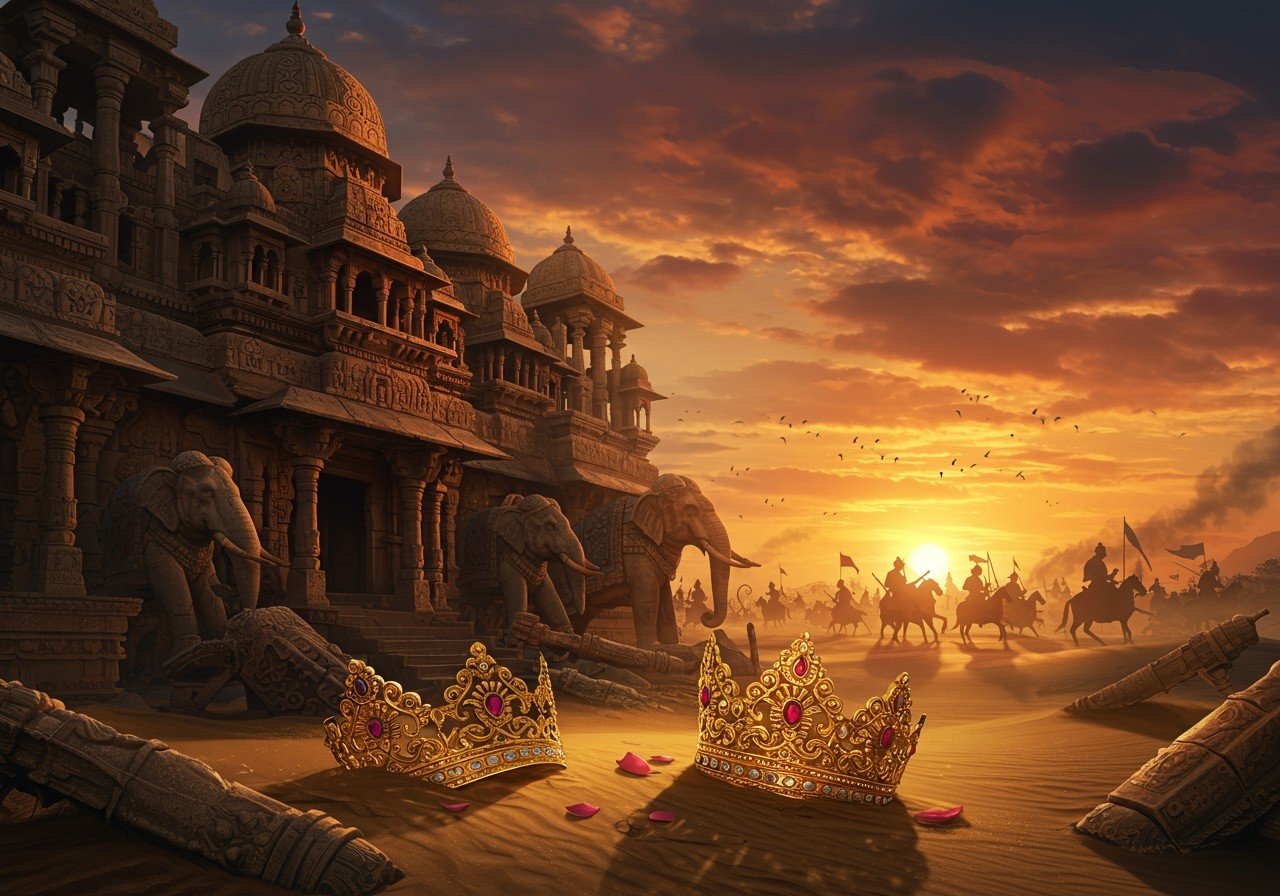
The Chalukya Dynasty, emerging in the 6th century, held significant power across southern and central India. Renowned for their contributions to art, architecture, and culture, their decline signified a major shift in the region’s history. This article delves into the reasons behind the Chalukya dynasty’s downfall and the rise of their successors, offering insights for those who appreciate India’s rich cultural heritage and historical accuracy.
Background of the Chalukya Dynasty
The Chalukya Dynasty originated in the Deccan region, with rulers like Pulakeshin II leaving a lasting mark. Their reign brought prosperity, and they are well known for:
- Art and Architecture: The Badami cave temples (check out related articles about Badami Cave Temples at poojn.in), the temples of Aihole, and Pattadakal stand as prime examples of their architectural prowess. These structures showcase intricate carvings and a unique blend of architectural styles, reflecting the dynasty’s artistic sensibilities.
- Political Structure: With their capital at Badami, they implemented a robust administrative system that contributed to their stability and expansion. This well-organized structure allowed for efficient governance and resource management.
- Military Conquests: Strategic alliances and a powerful military played a crucial role in expanding their territorial control. Their military achievements solidified their dominance in the region and helped spread their influence.
The Chalukyas significantly shaped the cultural and political landscape of the Deccan region.
The Decline of the Chalukya Dynasty
Several factors contributed to the decline of the Chalukya Dynasty:
- Internal Conflicts: Succession disputes and internal power struggles weakened their rule, creating instability and division within the kingdom. The death of Pulakeshin II in 642 CE triggered a period of internal feuds and instability.
- External Invasions: Attacks by the Rashtrakutas and the Cholas inflicted significant losses and weakened their defenses. The Rashtrakutas, under Dantidurga, ultimately overthrew the Chalukyas in the mid-8th century.
These challenges, combined with the rise of new powers, ultimately led to the end of the Chalukya reign.
The Successors of the Chalukya Dynasty
Following the decline of the Chalukyas, several dynasties emerged:
- The Rashtrakutas: The Rashtrakutas rose to prominence in the Deccan region after defeating the Chalukyas. Their reign saw continued patronage of art and architecture, with notable rulers like Amoghavarsha I contributing to their cultural legacy. Explore more about the architecture of temples built during and after the Chalukya dynasty at poojn.in.
- The Western Chalukyas: A branch of the Chalukyas, known as the Western Chalukyas or the Later Chalukyas, re-established Chalukya traditions in the western Deccan. They ruled from the late 10th century to the 12th century, leaving their own mark on the region’s history and culture. Discover more about the Western Chalukya legacy and their temples, such as the Sas Bahu Temples, at poojn.in.
- The Hoysalas: After defeating the last Chalukya king, Someshwara IV, in 1183 CE, the Hoysalas became the dominant power in southern India. Known for their intricate temple architecture, the Hoysalas represent another significant chapter in the region’s history.
Poojn.in: Connecting You to India’s Rich Cultural Heritage
At Poojn.in, we understand the deep connection between cultural heritage and spiritual practices. Just as dynasties like the Chalukyas and their successors shaped India’s history, Poojn.in helps you preserve and continue these traditions. We offer a wide range of authentic puja items, from brass thalis to copper kalashes, enabling you to perform rituals and ceremonies in the traditional way. Discover our collection of pure puja essentials at poojn.in and continue the legacy of devotion and reverence that has been passed down through generations.
Conclusion
The Chalukya Dynasty’s influence on the Deccan region remains significant. Their contributions to art, architecture, and political systems established a strong foundation for future dynasties. While internal and external pressures led to their decline, the rise of successors like the Rashtrakutas, Western Chalukyas, and Hoysalas ensured the continuation of cultural and administrative developments. The story of the Chalukyas is a testament to the enduring spirit and rich tapestry of Indian history.


